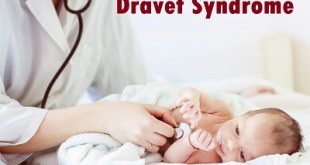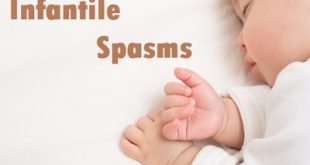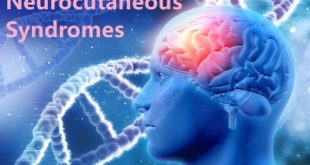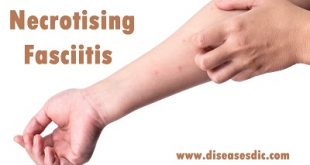Definition
Neuropathic pain is defined as pain caused by a lesion or dysfunction in the nervous system. There is no noxious (pain causing) stimulus that is causing the pain. Rather, the pain results from inappropriate signals in the nervous system. Unlike physiologic pain, which serves to warn and protect individuals from possible or actual injury, neuropathic pain serves no useful purpose.
Some examples of peripheral neuropathic pain include:
- Postherpetic neuralgia (pain occurring after shingles);
- Diabetic neuropathy;
- Pain following limb amputation.
Types of Neuropathic Pain
Painful diabetic neuropathy
Having diabetes and high blood sugar levels can damage your nerves, especially those in the legs and feet. This condition – diabetic neuropathy – can cause pain as well as numbness and tingling.
Trigeminal neuralgia
Trigeminal neuralgia is a disorder of the trigeminal nerve – the nerve that supplies sensation to the face and controls some of the muscles involved in chewing. People with trigeminal neuralgia have episodes of severe facial pain that last from a couple of seconds to several minutes.
Post-herpetic neuralgia
About one in every 5 people with shingles (a painful rash is also known as herpes zoster) develops post-herpetic neuralgia – ongoing pain in the area that was affected by the rash. It occurs when the shingles virus damages the underlying nerves, and the resulting pain can last for months or years.
Phantom limb pain
This condition affects people who have had an arm or leg amputated, causing pain or discomfort in the area of the now-missing limb. The exact cause of phantom limb pain is not known, but it is thought to be due to changes in both the nerves of the affected limb and the central nervous system (brain and spinal cord) following amputation.
Mechanisms/pathophysiology
Neuropathic pain results from damage to an afferent pathway that can be the result of a disease, trauma, or dysfunction.
Ectopic nerve activity/Peripheral Sensitization This mechanism is responsible for pain sensed in the absence of external stimuli. Spontaneous nerve activity has been shown in both the injured nerve as well as uninjured neighboring nerves. This spontaneous activity is thought to be related to an increase in voltage-gated sodium channel expression. This increased expression allows for decreased activation thresholds and increased membrane excitability. Additional expressional changes of other channels (i.e. K+) are also likely to occur but are less studied at this point.
Protein regulation is also altered with nerve damage. For example, a protein TRPV1 (transient receptor protein V1) that is activated at noxious stimuli around 40 Celsius is downregulated at injured fibers but upregulated at nearby uninjured fibers. This may decrease the activation temperature (i.e. to 38 Celsius, near body temperature) and result in the sensation of noxious heat/burning stimuli near the site.
Central Sensitization Regular discharge from peripheral nerves causes a release of excitatory neuropeptides and amino acids in the dorsal horn. This leads to phosphorylation of NMDA and AMPA receptors and expression of voltage-gated sodium channels (similar to ectopic nerve activity). This results in neuronal hyperexcitability that can lead to allodynia and hyperalgesia via activation of mechanosensitive A-beta and A-delta afferent fibers connecting with second-order nociceptive neurons.
Inflammatory reaction Inflammation results in activation of microglia in the nerve as well as the dorsal root ganglion. A proinflammatory milieu is created including cytokines, chemokines, substance P, TNF alpha, etc. These factors facilitate neuropathic pain by further enhancing neuron excitability.
What causes neuropathic pain?
Neuropathic pain often seems to have no obvious cause. But some common causes of neuropathic pain include:
- Alcoholism
- Amputation
- Chemotherapy
- Diabetes
- Facial nerve problems
- HIV infection or AIDS
- Multiple myelomas
- Multiple sclerosis
- Nerve or spinal cord compression from herniated discs or from arthritis in the spine
- Shingles
- Spine surgery
- Syphilis
- Thyroid problems
What are the risk factors for Neuropathic Pain?
Anything that leads to loss of function within the sensory nervous system can cause neuropathic pain.
- As such, nerve problems from carpal tunnel syndrome or similar conditions can trigger neuropathic pain.
- Trauma, causing nerve injury, can lead to neuropathic pain.
- Other conditions which can predispose patients to develop neuropathic pain include diabetes, vitamin deficiencies, cancer, HIV, stroke, multiple sclerosis, shingles, and cancer treatments.
What are the Symptoms of Neuropathic Pain Exactly?
Each person’s symptoms of neuropathic pain may be different, but these symptoms are common:
- Shooting, burning or stabbing pain
- Tingling and numbness, or a “pins and needles” feeling
- Spontaneous pain, or pain that occurs without a trigger
- Evoked pain, or pain that’s caused by events that are typically not painful, such as rubbing against something, being in cold temperatures, or brushing your hair
- A chronic sensation of feeling unpleasant or abnormal
- Difficulty sleeping or resting
- Emotional problems as a result of chronic pain, loss of sleep, and difficulty expressing how you’re feeling
Complications of Neuropathic Pain
- Patients with chronic nerve pain may suffer from sleep deprivation or mood disorders, including depression and anxiety.
- Because of the underlying neuropathy and lack of sensory feedback, patients are at risk of developing injury or infection or unknowingly causing an escalation of an existing injury.
Diagnosis and Screening
If your doctor suspects you may have neuropathic pain, he or she will ask about your pain and any other sensations you experience, such as pins and needles or numbness. Your doctor will also want to know about any events or illnesses that may have caused it.
Your doctor will perform a physical examination, testing the nerves in the affected area. They may touch the skin in the affected area with cotton wool, toothpicks or warm or cool objects as part of the examination.
If your symptoms and physical examination suggest you have neuropathic pain your doctor can prescribe specific treatment for this type of pain.
To make a definite diagnosis of neuropathic pain, the underlying cause of the pain needs to be found. Your doctor may recommend tests including:
- Blood tests
- Nerve conduction studies (to measure how quickly your nerves can carry electrical signals)
- An MRI scan
Biopsy
Sometimes a biopsy (tissue sample) can help with diagnosis. A skin biopsy (looking for a reduced density of nerve fibres in the skin) or a nerve biopsy (looking for abnormalities in the nerve fibres) may be recommended.
Treatment and medications that cure Neuropathic Pain
Treatment of neuropathic pain first entails addressing the underlying problem. For example, if a person has neuropathic pain from diabetes, optimizing blood sugar (glucose) control is an essential next step. Bear in mind, though, enhanced glucose control cannot generally reverse the neuropathy, although it can prevent it from getting worse and ease current symptoms.
As another example, if a medication is causing debilitating nerve pain, removal or a decrease in the dose of the offending drug may be all that is needed.
First-Line Medications
Besides treating the underlying problem, medication is often needed to manage neuropathic pain.
For the vast majority of patients, treatment of neuropathic pain involves taking one of the following:
- An antidepressant like Cymbalta (duloxetine) or Elavil (amitriptyline)
- An anti-seizure medication like Neurontin (gabapentin) or Lyrica (pregabalin)
In terms of side effects, nausea is the most common side effect of Cymbalta. Elavil generally poses more of a problem, mostly because of its risk for heart toxicity, as well as other bothersome side effects, including:
- Dry mouth
- Constipation
- Urinary retention
- Lightheadedness or dizziness when standing up
Neurontin may cause dizziness, tiredness, confusion, and swelling in the lower legs. Lyrica may cause dizziness, tiredness, dry mouth, swelling, and blurry vision.
Second-Line Medications
Opioids like Vicodin (hydrocodone/paracetamol) and Percocet (oxycodone/acetaminophen) are not as effective for treating neuropathic pain and, thus, are considered second-line treatments. In addition to their questionable benefit, opioids are associated with several side effects.
The potential side effects of opioids may severely affect a person’s quality of life and include:
- Nausea and vomiting
- Constipation
- Itching
- Dry mouth
- Urinary retention
- Drowsiness
- Memory and thinking problems
- Slowed breathing
In addition to these side effects, there is a nationwide concern for opioid addiction and abuse, which must be considered.
Unique Therapies
There are some types of neuropathic pain that may require a unique treatment plan.
- For instance, if a person’s neuropathic pain is localized, as is often the case in postherpetic neuralgia, a topical (on the skin) therapy, like a lidocaine patch may be used.
- In other instances, surgery may be necessary—for example, to release a compressed nerve, as in carpal tunnel syndrome. In the case of a herniated disc, in which an inflamed spinal nerve is a culprit behind the pain, an epidural steroid injection into the spine is sometimes performed.
- Lastly, sometimes certain medications are used to treat specific neuropathic pain conditions. A classic example is a trigeminal neuralgia, which is characterized by severe, stabbing neck and facial pain. This disorder is treated with the anti-seizure medication, Tegretol (carbamazepine) or Trileptal (oxcarbazepine).
Complementary Therapies
There are a variety of complementary therapies that can help relieve neuropathic pain. These therapies are commonly used in combination with medications and include:
- Physical or occupational therapy
- Relaxation therapy
- Massage therapy
- Acupuncture
How to prevent Neuropathic Pain?
The best way to prevent neuropathic pain is to avoid the development of neuropathy.
- Monitoring and modifying lifestyle choices, including limiting the use of tobacco and alcohol
- Maintaining a healthy weight to decrease the risk of diabetes, degenerative joint disease, or stroke
- Using the good ergonomic form at work or when practicing hobbies to decrease the risk of repetitive stress injury are ways to decrease the risk of developing neuropathy and possible neuropathic pain.
 Diseases Treatments Dictionary This is complete solution to read all diseases treatments Which covers Prevention, Causes, Symptoms, Medical Terms, Drugs, Prescription, Natural Remedies with cures and Treatments. Most of the common diseases were listed in names, split with categories.
Diseases Treatments Dictionary This is complete solution to read all diseases treatments Which covers Prevention, Causes, Symptoms, Medical Terms, Drugs, Prescription, Natural Remedies with cures and Treatments. Most of the common diseases were listed in names, split with categories.








nice one ,but I have a problem when I stand for 10 minutes my leg will be paining me seriously
Please consult a doctor to recover from this problem.
my wife has severe pain on her low back then the pain shift to low front , strong analgesics medications but with no use
The information I’ve read really help as Ive seen some of my health problems are there.
How ever, Im a diabetic patient and need more information of how I can be cured or is there any cure for this disease?
Please consult a doctor to get more information regarding this disease.
Have pain in my back neck down to the shoulders.What might be the problem
Please consult a doctor and diagnose the problem.
Trigger finger (stenosing tenosynovitis) for four months.
Please consult a doctor to get cure from this problem.
i have chronic pain due to my drug abuse and this articale make me feel im normal person and i do feel great pain
I kindly need your help and need it urgently. I often get numbness from my waste down to my toes hence rendering my penis erectless or do not erect at all. This has coursed my marriage a great pain. My penis size has also reduced to less than an inch. Please I need your help and need it more than urgent. May God bless you through your help to me. Amen.
Please consult a doctor.
sir i have back pain and another pain who around one by one jaints pls tell me medicin
Please consult a pain management specialist.
hi doc. thank you very much for this information. I have a severely pain on left side of my head, when I touch my hair I feel a little pain and numbness. the pain is usually a daily basis thing. comes and goes for seconds and sometimes minutes. usually if feels even worse during morning ours around 3am. Its very hard to sleep at that time. my neck becomes stiff and painful forcing me to sit down or lay down. and my right eye gets painful during the day and drips water. I ONCE HAD A CAR ACCIDENT.
Please consult a doctor.
I am suffering from legs pain’ joints pain from last 6 years. I visited doctor’s he gives some tablets and it’s cure. After some (3-4) months again will start and it’s repeat from the last 6 years. At the time of morning have pain.
Now from 5 months heavy back pain. I visited 5 to 6 doctors for back pain but no result no cure. I done Lab test also blood, urine, ECG, X-ray also everything in normal.
Please take some natural treatment.
my legs have too much heat in them what’s the cause?
Please consult a doctor.
I want remedy for blurred vision. thank you .
Please consult a doctor.
I have had numbness in both feet for the last ten years. also restless feet when sitting or lying down.Walking and standing can be challenging. I am not diabetic. please advise.
Please consult a neurologist.
I have numb and tingling in my feet, and left leg is numb and swollen from knee down. I had knee surgery 6/19/18 and on 7/15/18 I felt something pop in knee cap and since I have numb feeling down left side of the knee..The lower front of leg is sinsative to touch, red and stays swollen.. I have spoken with my doctor and he said scar tissue.. What can this be and can it be fix,, 62 and active..
yes with some biomaterials the scar tissue can be replaced. But please consult an orthopedic surgeon.
my doctor will not prescribe any pain meds….what do I do? he is (afraid ) because of my past ( like 30 years ago) history of drug use ( not an addict) and what and how the system looks at him instead of giving me a. better quality of life. I have expressed to him that I am not a drug seeker !!! I am taking 1200 mg of gabapentin and tramadol ? a day however I have no relief…… pherephial nerophropy caused by a high viral load from hep c is what I am told is the factor of my demise. help.
.
Kindly follow as per the doctors prescription don’t follow your choice of drugs.
amitriptyline
pregabalin
Acetaminophen
and excercises
are curing some nerve pain
my wife have severe pain at her waist and legs and she can not move well
please consult a neurologist.
Thanks for good advices, I’m trying to quit smoking but its, hard.
I have been looking on this site to help my condition and learn about it and hopefully control it more but cannot see Fibromyalgia (FMS)
Thank you for using our app. For more information about fibromyalgia, kindly have a glance at our web page: http://diseasesdic.com/fibromyalgia-symptoms-complications-and-epidemiology/
I have neck pain for about three weeks now,ive used some recommended drugs to no avail pls kindly recommend one for me
Please consult a doctor for better prescription of treatment.
I am suffering from cold feet numbness in both the legs and 24hrs pain in legs.does Diabetic Neuropathy has 24hrs of and numbness or its symptoms is different pls explain it is since 6
months.pls adv me I had shown to numerous neurologist but no response..
It is advised to have the natural treatment and follow proper food diet along with the medication and surgery treatment.
last 25year’s back I have 2 major surgery of cervical spine 50 percentage I recovered but still I have pain in my neck difficult to walking please suggest treatment or related doctors thanks so much
my sugar is normal bp normal my age 65 years
Please consult a spine surgeon for better diagnosis and treatment.
This is not a comment though but a question. Stabbing and excruciating pains in the right side of the tongue without a physical wound what type of a disorder is it and what is the treatment for it?
There might be damage of nerve in the tongue. It would be better to consult a doctor for proper prescription and treatment.
what is a good medication to fight inflammation in the body.
Anti-inflammatory pain reliever drugs (NSAIDs such as aspirin, ibuprofen or Celebrex)
please send me the medication prescription for dibetes neuropathic pain in legs and both hands and feet.
Please consult a doctor to get medication prescription for diabetes neuropathic pain.
medication for the prevention of neuro pain medicationsthank & regards
Kindly have a glance at the post for medicines and prevention.
my MRI report is cervical spondilysis
and I am suffering from sever chest muscle and back muscle pain
this pain is cause of cervical spondilysis??
Yes the back and chest muscle pains due to the onset of cervical spondylosis
I am 2 or 3 hours reading then slow pain in brain and always slow back pain kindly reply
Might be your sitting posture is the cause of your pain. We strongly recommend you to contact a doctor for appropriate diagnosis and treatment.
am have a problem in spinal cord and my waist
please consult a neurosurgeon